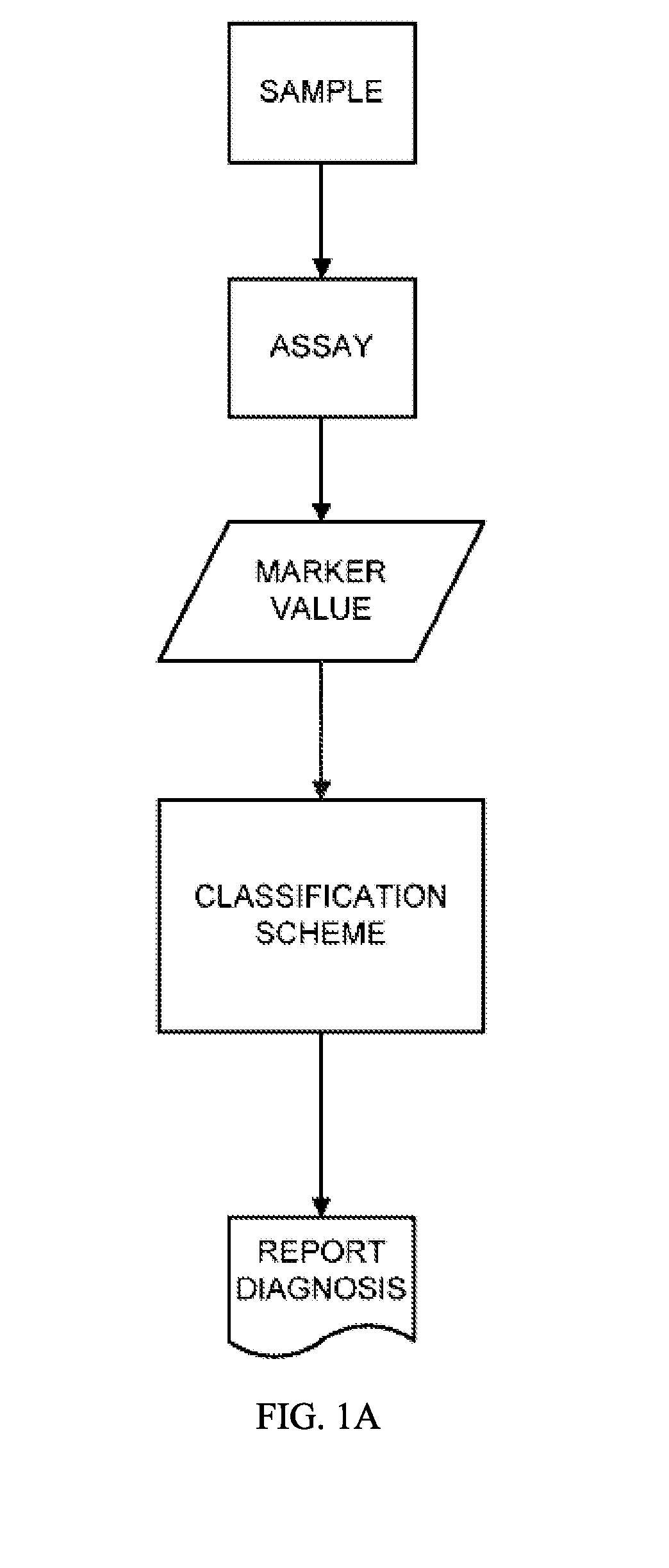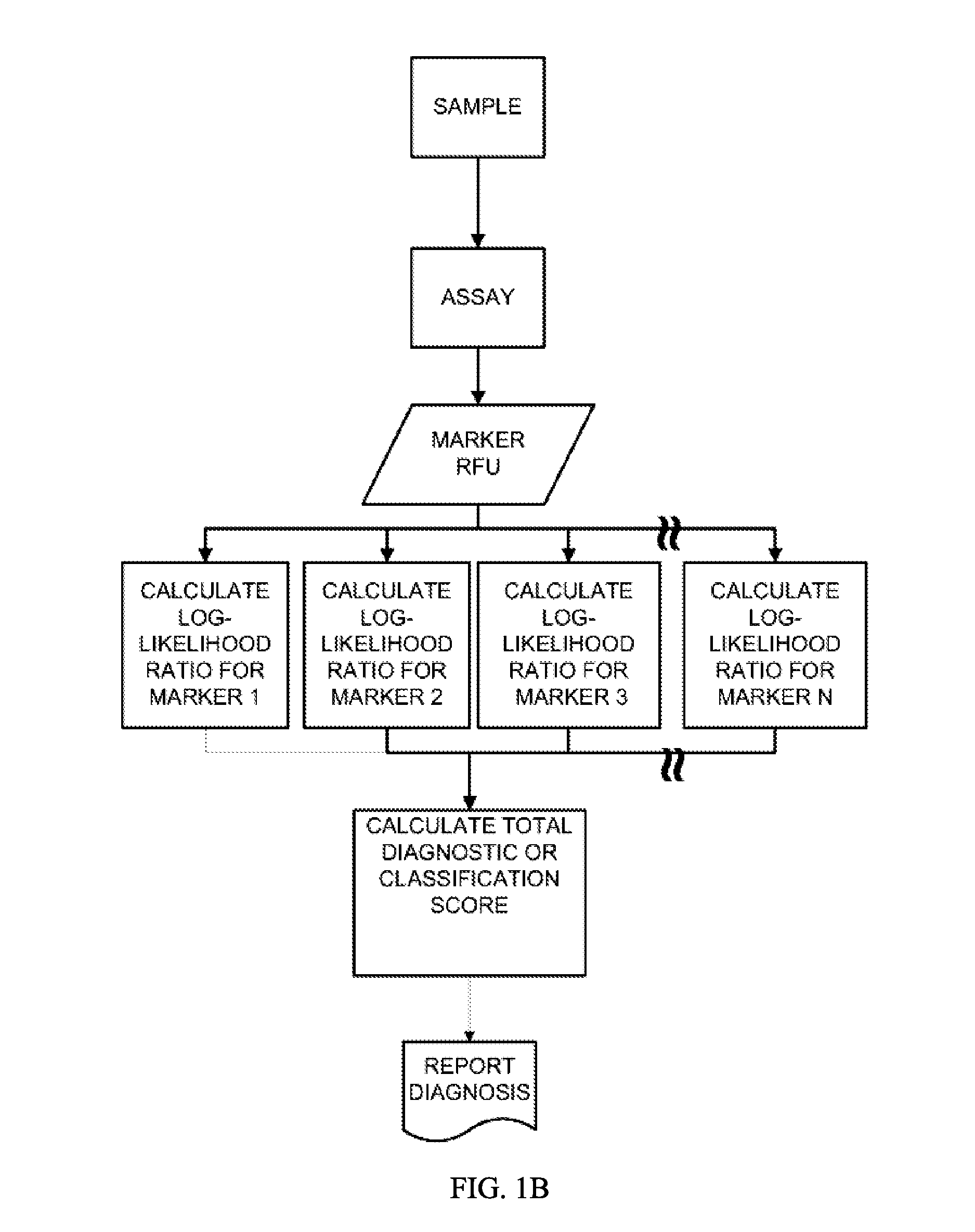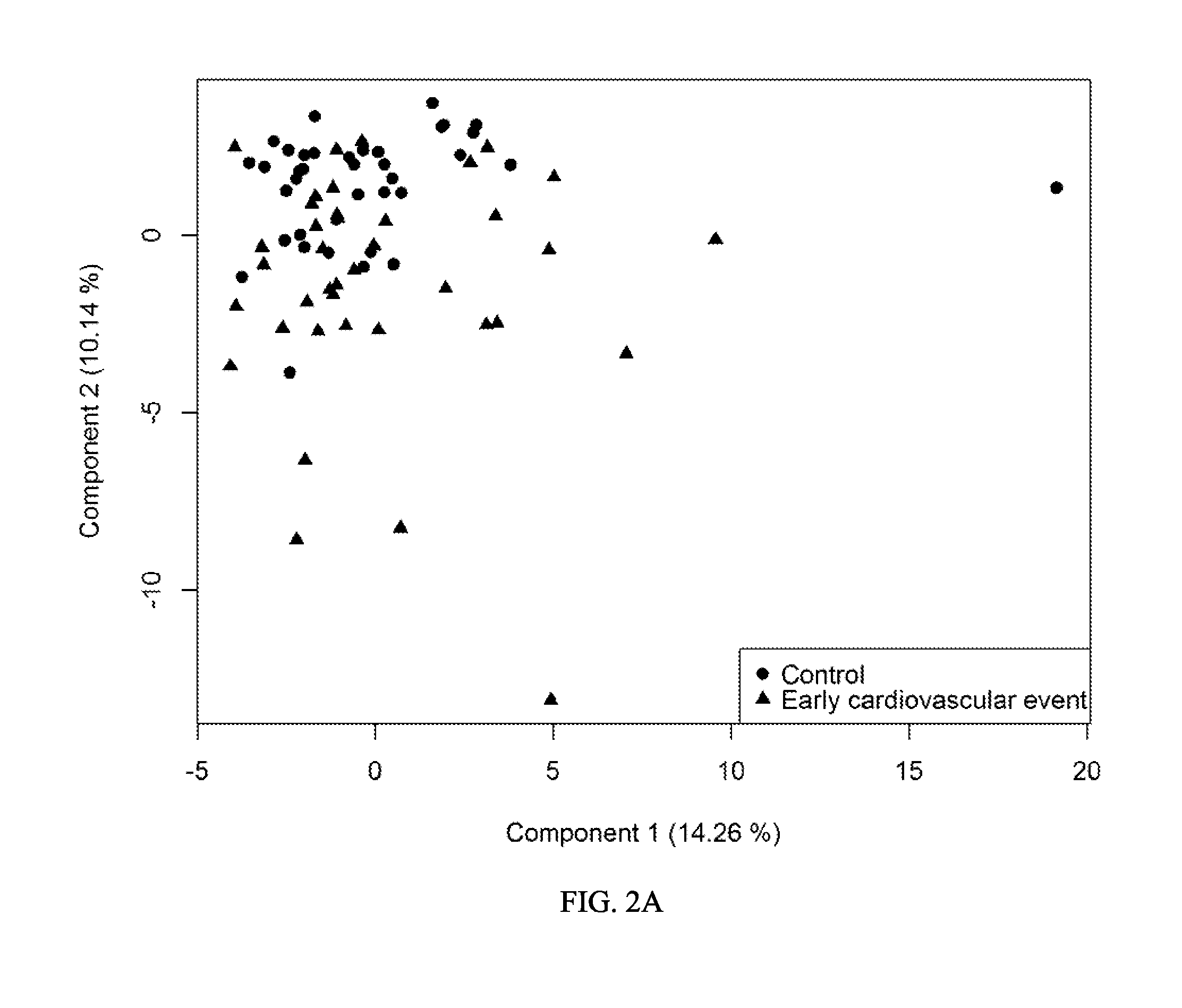Cardiovascular Risk Event Prediction and Uses Thereof
a risk event and cardiac disease technology, applied in the field of cardiac disease risk event prediction, can solve the problems of modest performance of existing risk factors and biomarkers, low response rate to interventions, behavior and lifestyle changes, etc., and achieve the effect of improving the prediction performance, reducing the risk of cardiac disease, and determining the risk associated with protein measurements more accurately
- Summary
- Abstract
- Description
- Claims
- Application Information
AI Technical Summary
Benefits of technology
Problems solved by technology
Method used
Image
Examples
example 1
Multiplexed Aptamer Analysis of Samples
[0235]This example describes the multiplex aptamer assay used to analyze the samples and controls for the identification of the biomarkers set forth in Table 1. The general protocol for analysis of a sample is illustrated in FIGS. 1A and 1B. Commonly in medical studies of survival data, the Cox proportional hazard model is employed to produce a risk score from multiple covariates of pathological state. In this work, we have employed this simple and well known approach to devise a model from the population data in the Heart and Soul study, for example, suitable for application to individual samples according to this flexible and widely used Cox Proportional Hazard Formalism. The biomarker values are combined as shown in FIG. 1B by taking the log ratio of the biomarker measurements relative to the normal levels. The Cox model uses the exponential of the weighted sum of these log ratios to produce an estimate of the hazard ratio to the normal popu...
example 2
Biomarker Identification
[0280]The identification of potential CV event biomarkers was performed for prediction of risk of a CV event in a population of individuals in the San Francisco Bay Area. Participants had to meet one of the following enrollment criteria for this study: prior myocardial infarction, angiographic evidence of greater than 50% stenosis in 1 or more coronary vessels, exercise-induced ischemia by treadmill or nuclear testing, or prior coronary revascularization. Exclusion criteria included recent myocardial infarction, inability to walk around 1 block, and plans to relocate. Fasting blood samples were collected, and serum and plasma aliquots were stored at −70° C. The multiplexed SOMAmer affinity assay as described in Example 1 was used to measure and report the RFU value for 1034 analytes in each of these 987 samples.
[0281]In order to identify a set of biomarkers associated with occurrence of events, the combined set of control and early event samples were analyzed...
example 3
Univariate Analysis of the Relationship of Individual Proteins to Time to CV Event
[0284]The Cox proportional hazard model (Cox, David R (1972). “Regression Models and Life-Tables”. Journal of the Royal Statistical Society. Series B (Methodological) 34 (2): 187-220)) is widely used in medical statistics. Cox regression avoids fitting a specific function of time to the cumulative survival, and instead employs a model of relative risk referred to a baseline hazard function (which may vary with time). The baseline hazard function describes the common shape of the survival time distribution for all individuals, while the relative risk gives the level of the hazard for a set of covariate values (such as a single individual or group), as a multiple of the baseline hazard. The relative risk is constant with time in the Cox model.
[0285]The method involved fitting 1092 simple univariate Cox models to all signals. Forty-six proteins have P-values (Wald, Abraham. (1943). A Method of Estimating ...
PUM
| Property | Measurement | Unit |
|---|---|---|
| time | aaaaa | aaaaa |
| time | aaaaa | aaaaa |
| volumes | aaaaa | aaaaa |
Abstract
Description
Claims
Application Information
 Login to View More
Login to View More - R&D
- Intellectual Property
- Life Sciences
- Materials
- Tech Scout
- Unparalleled Data Quality
- Higher Quality Content
- 60% Fewer Hallucinations
Browse by: Latest US Patents, China's latest patents, Technical Efficacy Thesaurus, Application Domain, Technology Topic, Popular Technical Reports.
© 2025 PatSnap. All rights reserved.Legal|Privacy policy|Modern Slavery Act Transparency Statement|Sitemap|About US| Contact US: help@patsnap.com



